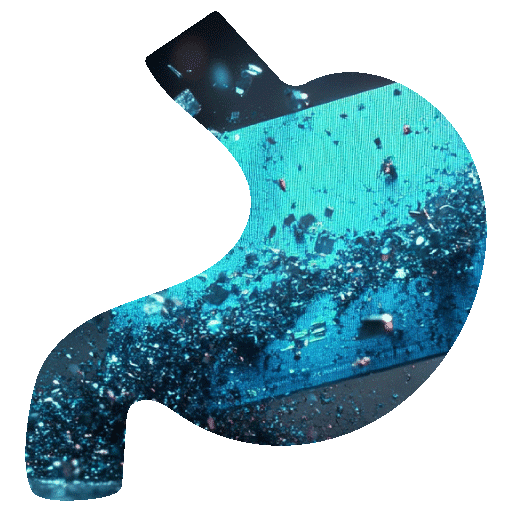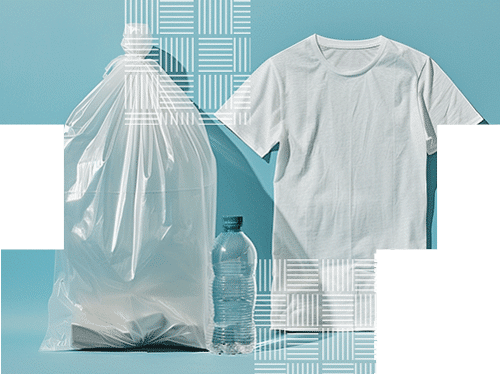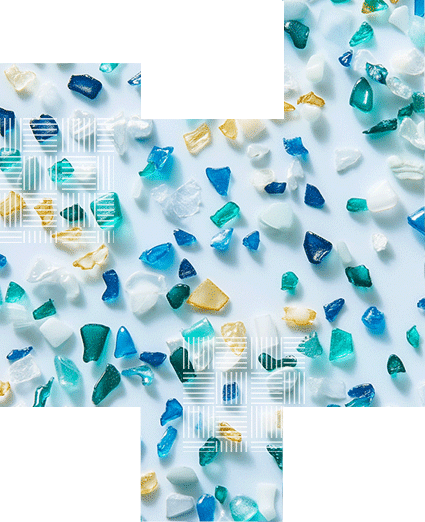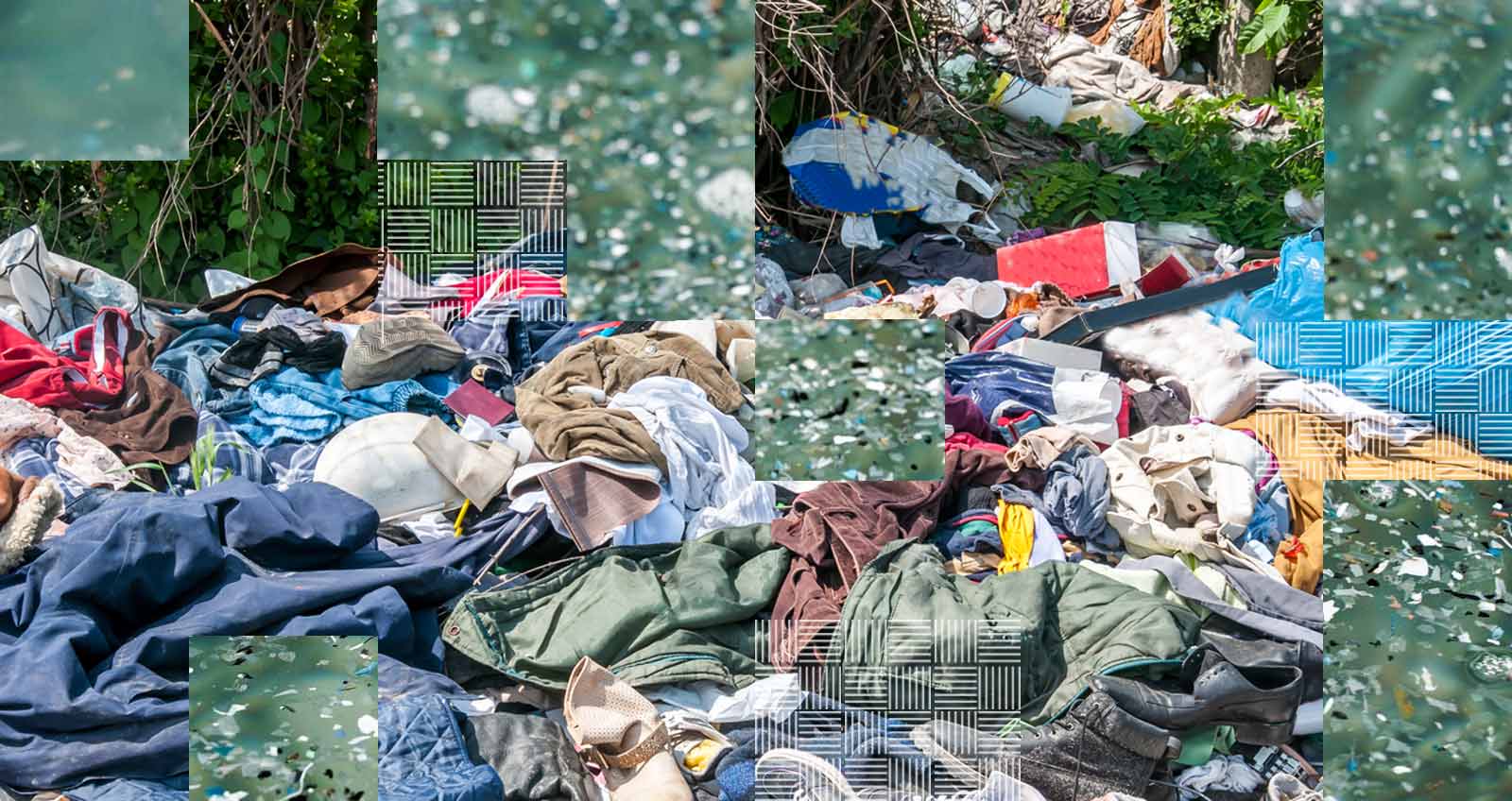MICROFIBERS
Breaking Free from Plastic: How Cotton Champions a More Responsible Textile Future
Plastic pollution is one of the defining environmental challenges of our era. Each year, millions of metric tons of plastic find their way into our ecosystems—from the deepest oceans to the highest mountains—affecting wildlife and natural landscapes. This pervasive issue even extends to the very fibers that make up our clothes.
How Do Textiles Contribute to Plastic Pollution?
While bottles and bags are often seen as the face of plastic pollution, there’s another, less visible source: the fibers woven into our everyday fabrics. Synthetic fabrics are, in fact, plastics—often made from polyethylene terephthalate (PET), the same chemicals found in single-use plastic bottles and packaging.
Plastic pollution from synthetic apparel comes from two primary forms. The first and most significant issue is macro plastics: large pieces of plastic waste from discarded or mismanaged synthetic garments. A recent study estimated that the apparel value chain is responsible for approximately 8.4 million metric tons of plastic leakage per year, with the vast majority coming from these larger fragments at the end of a garment’s life. It’s crucial to understand that while microplastics receive significant attention, these larger pieces of textile waste are the predominant form of plastic leakage from clothing. Eventually, all this macroplastic leakage will fragment and break down into microplastic pollution.
The smaller and unfortunately now ubiquitous forms of plastic pollution come directly from synthetic apparel during use, in the form of microplastics. A single load of laundry, for instance, can release hundreds of thousands of these plastic particles into wastewater systems, eventually reaching our rivers and oceans where they persist for centuries1. Recent research has even detected microplastics in unexpected places, including human lungs, placenta, blood, and brain tissue2 3.
Did you know?

The apparel industry contributes an estimated 14% of the total of all annual plastic leakage into the environment, primarily through macroplastic waste at the garment’s end-of-life.4

While microplastic ingestion estimates vary across studies, some work suggests that individuals may consume up to 0.17 ounces of microplastics weekly, which is equivalent to the weight of a credit card.5 These findings will contribute to future human health risk assessment frameworks.

All garments shed fiber fragments, however cotton fibers can biodegrade by up to 90% in just 40 days in wastewater treatment environments, offering a promising alternative to this growing plastic pollution problem7
What’s the Difference Between Microplastics and Macroplastics?

Macroplastics are large plastic debris, like bottles, bags, fishing nets, and discarded synthetic t-shirts. These items visibly pollute our oceans, landscapes, and waterways, and over time, can break down into smaller plastic particles.

Microplastics are tiny plastic particles less than 5mm in size. A significant portion of these microplastics are shed from washing and wearing synthetic clothing like polyester, nylon, and acrylic.
How Does Cotton Support Solutions to Plastic Pollution?
As awareness of plastic pollution grows, choosing natural fibers like cotton becomes increasingly important. Unlike synthetic textiles, cotton offers a more sustainable alternative that helps mitigate plastic pollution.
By choosing cotton, you’re opting for a material that:
- Is Free from Plastic: Cotton is a plant-based fiber, inherently free of harmful microplastics. Studies show cotton biodegrades rapidly compared to synthetic fibers.6 7 8 9
- Biodegrades Naturally: At the end of its life, cotton breaks down, returning nutrients to the soil. Cotton microfibers biodegrade by up to 90% in just 40 days in wastewater treatment environments.6 Even when treatments such as softeners, water repellents, and durable press are applied to cotton, the cotton still degrades to the same or higher degree than oak leaves.7
- Reduces Synthetic Burden: Shifting towards cotton reduces our reliance on fossil fuel-based synthetic textiles, lessening the flow of new plastics into the environment.

What Can You Do to Reduce Plastic Pollution?
- Prioritize Cotton & Natural Fibers: For clothing, home textiles, and everyday essentials, make natural, biodegradable fibers your first choice. Always check the label to know what you’re buying. Learn more about the benefits of cotton clothing here.
- Choose Reusable Over Single-Use Plastics: Opt for reusable alternatives such as water bottles, straws, utensils, food storage containers, and shopping bags. Consider choosing glass or stainless steel for items like bottles and food storage, as they are durable, and non-toxic. Durable options like cotton tote bags can replace single-use plastic bags, which often fragment into microplastics in soil and waterways, potentially contaminating our food chain.8 9
- Wash Synthetics Mindfully (If You Own Them): For any synthetic items you already have, wash them less often, use cold water, and run full loads.
- Dispose Thoughtfully: When items reach the end of their life, seek out textile recycling programs for synthetics. For 100% cotton, explore composting or recycling options. Programs like Blue Jeans Go Green™ have helped divert over 2,800 tons of denim from landfills since 2006.
Science & FAQs: Your Questions Answered
Q: How does choosing cotton help with the larger plastic pollution problem?
A: Choosing cotton helps reduce reliance on synthetic fibers, which are derived from fossil fuels and contribute significantly to plastic pollution.4 Unlike synthetics, cotton does not shed persistent microplastics during washing or wear. Instead, its natural cellulose fibers biodegrade quickly, returning nutrients to the soil rather than persisting in the environment for centuries.4 6 7 8 9 This makes cotton a more sustainable choice that aligns with efforts to combat plastic pollution globally.
Q: How does choosing cotton contribute to a circular economy in textiles?
A: Cotton plays a key role in fostering a circular economy by being a natural, renewable, and biodegradable fiber. At the end of its life cycle, 100% cotton products can decompose naturally, returning nutrients to the soil rather than persisting as waste in landfills or oceans like synthetic fibers.6 Additionally, cotton is widely recyclable and can be repurposed into new products, such as insulation. This reduces waste and extends the material’s lifecycle.
Q: Are there innovations in cotton farming or textile production that further minimize its environmental impact?
A: Yes, the cotton industry is actively adopting innovative practices to enhance sustainability and reduce its environmental footprint:
- Regenerative Agriculture: Practices like cover cropping and reduced tillage are enhancing soil health, improving water retention, reducing synthetic inputs, and boosting biodiversity.
- Water-Saving Techniques: Modern cotton farming uses significantly less water (up to 79% less than 40 years ago)10 through methods like no-till farming and advanced irrigation techniques (e.g., soil moisture sensors with irrigation scheduling).
- Traceability & Certification: Programs such as the U.S. Cotton Trust Protocol® ensure responsible practices by providing verifiable data and transparency across the supply chain, empowering informed consumer choices.
THE LATEST

From Seed to Finish: Cottonseed Oil Powers Safer, PFAS-Free Textile...
Why it matters: PFAS and formaldehyde restrictions are tightening; brands need safer, high-performance finishes that scale—and a credible circularity story. Driving the news: Cottonseed oil is emerging as a bio-based platform for formaldehyde-free wrinkle resistance...
The Fibers in Your Closet: Understanding Cellulose Biodegradability and the...
Learn how cotton breaks down in nature, why synthetic fibers don’t, and what this means for your wardrobe and the planet. Backed by new biodegradability data.
Stop the Cycle on Microplastics and Choose Cotton
Cotton Incorporated is leading the charge for cotton’s sustainability and promoting circularity to consumers.
From the Ground Up: Grower Perspectives on Regenerative Agriculture
Regenerative agriculture adoption: U.S. cotton growers are embracing it for economic, community, and environmental wins. Tailored practices: Practices must adapt to diverse conditions across the 17 U.S. cotton-producing states. Long-term benefits: Focus on soil...
- International Union for Conservation of Nature (IUCN). (2017). Primary microplastics in the oceans: A global evaluation of sources (IUCN Issues Brief No. 2017-002). Gland, Switzerland: IUCN. Retrieved from https://portals.iucn.org/library/node/46622
- Nihart, A.J., Garcia, M.A., El Hayek, E. et al. Bioaccumulation of microplastics in decedent human brains. Nat Med 31, 1114–1119 (2025). https://doi.org/10.1038/s41591-024-03453-1
- Roslan, N. S., Lee, Y. Y., Ibrahim, Y. S., Anuar, S. T. T., Ku Yusof, K. M. K., Lai, L. A., & Brentnall, T. (2024). Detection of microplastics in human tissues and organs: A scoping review. Journal of Global Health, 14, 04179. https://doi.org/10.7189/jogh.14.04179
- Kounina, A., Daystar, J., Chalumeau, S., Devine, J., Geyer, R. Pires, S., Uday Sonar, S., Venditti, R., Boucher, J. (2024). “The global apparel industry is a significant yet overlooked source of plastic leakage.”
- Senathirajah et al. (2021). Estimation of the mass of microplastics ingested – A pivotal first step towards human health risk assessment. Link
- Zambrano, M. C., Pawlak, J. J., Daystar, J., Ankeny, M., & Venditti, R. A. (2021). Impact of dyes and finishes on the aquatic biodegradability of cotton textile fibers and microfibers released on laundering clothes: Correlations between enzyme adsorption and activity and biodegradation rates. Marine Pollution Bulletin. Link
- Zambrano, M. C., Pawlak, J. J., Daystar, J., Ankeny, M., Goller, C. C., & Venditti, R. A. (2020). Aerobic biodegradation in freshwater and marine environments of textile microfibers generated in clothes laundering: Effects of cellulose and polyester-based microfibers on the microbiome. Marine Pollution Bulletin. Link
- K. Pakeerathan (2025). Hazards of Microplastic Pollution in Agriculture. Link
- N. Barrett et al. (2024). Quantification and Categorization of Macroplastics (Plastic Debris) within a Headwaters Basin in Western North Carolina, USA: Implications to the Potential Impacts of Plastic Pollution on Biota. Link
- Field to Market: The Alliance for Sustainable Agriculture. (2021). Environmental Outcomes from On-Farm Agricultural Production in the United States. National Indicators Report, fourth edition. https://fieldtomarket.org/national-indicators-report/
